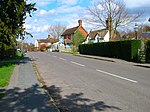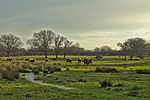St Mary's Church, Shipley
Church of England church buildings in West SussexEnglish churches with Norman architectureGrade I listed churches in West SussexKnights Templar

The Church of St Mary the Virgin is an Anglican church in the village of Shipley, in West Sussex, England. It is in the Diocese of Chichester. Built in the mid 12th century by the Knights Templar, it is a Grade I listed building.
Excerpt from the Wikipedia article St Mary's Church, Shipley (License: CC BY-SA 3.0, Authors, Images).St Mary's Church, Shipley
Church Close,
Geographical coordinates (GPS) Address External links Nearby Places Show on map
Geographical coordinates (GPS)
| Latitude | Longitude |
|---|---|
| N 50.9843 ° | E -0.37026944444444 ° |
Address
St. Mary's Church
Church Close
RH13 8PH
England, United Kingdom
Open on Google Maps










